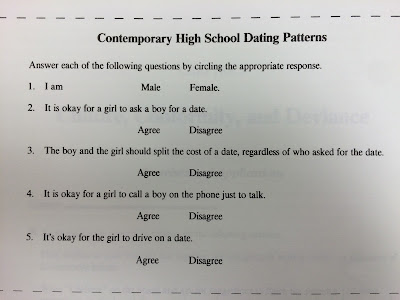1. "They and We" from Rudyard Kipling
2. What is Ethnocentrism and Cultural Relativism?
- Ethnocentrism: the idea that your own group or culture is better or more important than others
- Cultural Relativism: the principle that an individual person's beliefs and
activities should be understood by others in terms of that individual's
own culture.
Read the following passage:
In 1997, Annette Sorensen, 30, an actress from
Copenhagen, Denmark, and Exavier Wardlaw, 49, a movie production assistant from
Brooklyn, NY, were arrested for leaving their 14-month-old daughter outside a
Manhattan restaurant on a chilly day while they ate inside the restaurant. They
left the child in her baby carriage on the sidewalk. Many passersby called 911
to alert the police. New York authorities took the child away from her parents
and temporarily placed her in foster care.
In an ensuing article in the New York Times, one
Danish commentator observed that leaving a baby outside of a restaurant is a
very common practice in Denmark. The commentator wrote, “Often, Danish parents.
. . leave their babies outside. For one thing, Danish baby carriages are
enormous. Babies ride high above the world on horse-carriage-size wheels. It’s
hard to get such a carriage into a cafe. . . . Besides, Danish cafes are very
smoky places.” The commentator continued, “In Denmark, people have an almost
religious conviction that fresh air, preferably cold air, is good for children.
All Danish babies nap outside, even in freezing weather—tucked warmly under
their plump goose-down comforters. . . . In Denmark all children own a sort of
polar survival suit that they wear from October to April and they go out every
day, even in winter.”
What would be an ethnocentric
interpretation of the parents’ actions?
What would be a culturally relative
interpretation of the parents’ actions?
3. An Idiot Abroad
- India: 2:30-15:30 (13 mins)
4. Project Presentations







